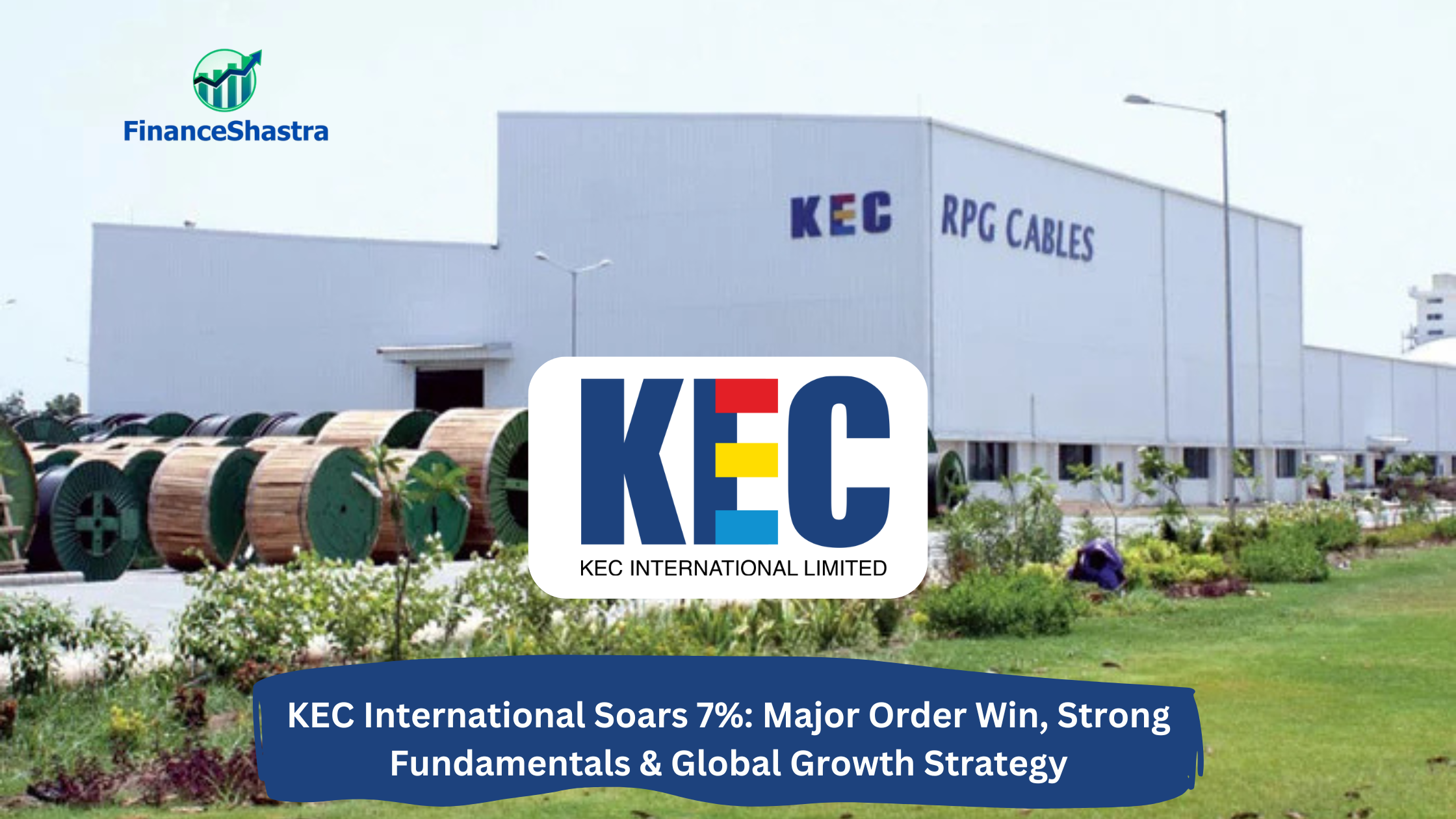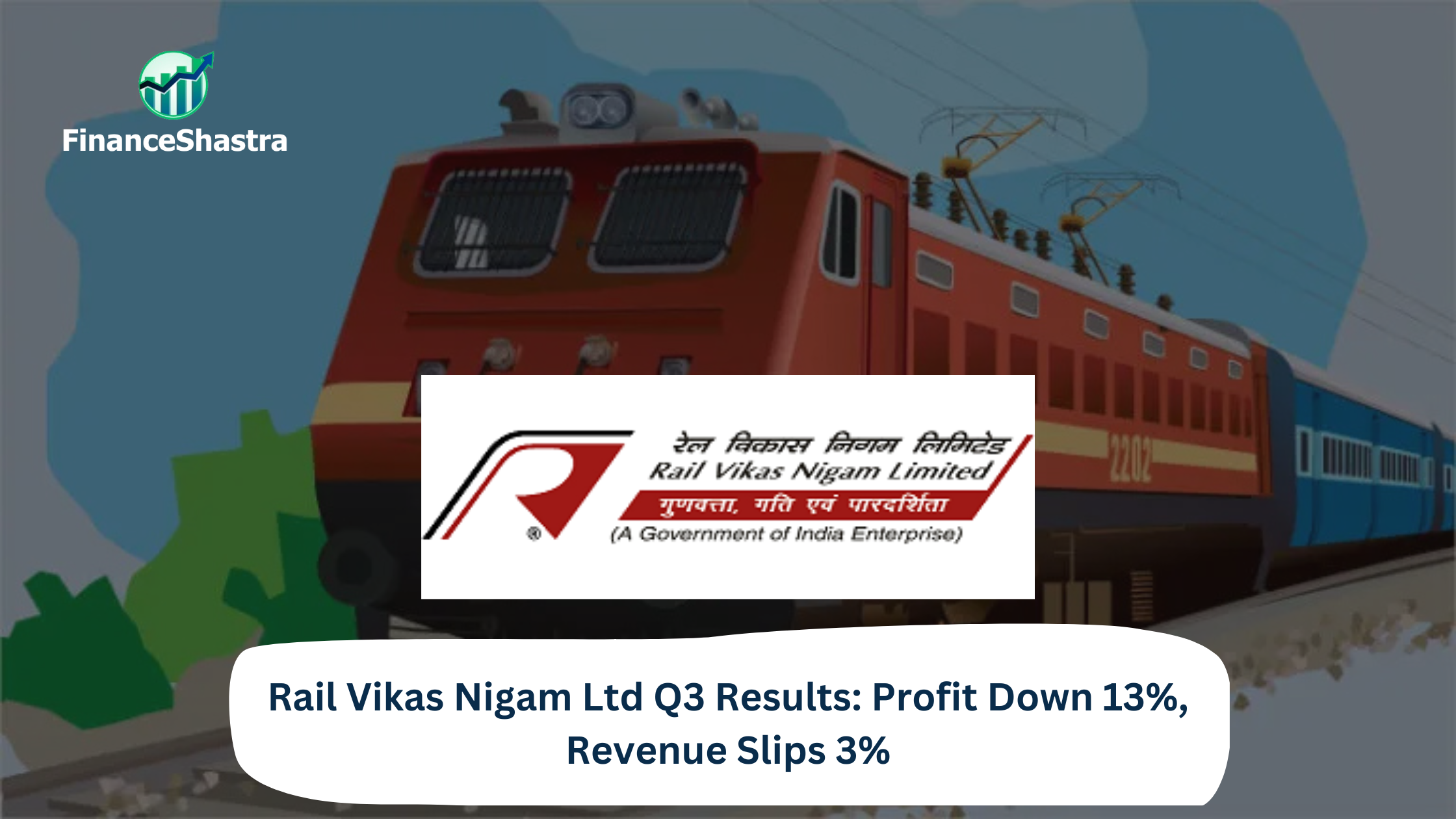KEC International Soars 7%: Major Order Win, Strong Fundamentals & Global Growth Strategy
Business and Industry Overview:
KEC International Ltd is an EPC company based in India. It builds power lines, railway tracks, buildings, and smart city projects. It also works in solar power and makes electric cables. The company helps carry electricity by building towers and wires. It started in the year 1945. Its old name was Kamani Engineering Corporation. It was the first power transmission company in Asia. The founder was Ramjibhai Kamani. In 1950, the Indian government gave KEC a big project. KEC had to supply towers for the Bhakra Nangal Dam. It built a factory in Mumbai with help from a French company. Later, it built another factory in Jaipur. By 1967, KEC made 60% of India’s electric towers. In the 1970s, KEC started working in many other countries. It did projects in Iran, Iraq, Kuwait, Saudi Arabia, Sudan, Egypt, Nigeria, Algeria, Mauritius, Indonesia, Malaysia, Thailand, the Philippines, Australia, New Zealand, Brazil, the United States, and Canada. Most of its money came from exports. It became the second-largest tower company in the world. Only one company in Italy was bigger. Later, KEC had money problems. In the 1970s, oil prices went up a lot. This made business hard. KEC had many loans and lost money. Some Indian banks helped the company. They asked for new people to manage the company. At that time, the RPG Group, led by R.P. Goenka, bought shares in KEC. In the end, RPG Group took full control. After that, KEC became strong again. Its sales went up. In 2005, the company changed its name to KEC International Ltd. In 2010, it joined with another company called RPG Cables. In the same year, KEC bought a company in the United States. This company also worked in Mexico and Brazil. The name was SAE Towers. After this, KEC became the largest tower maker in the world. It could make 300,000 tons of towers every year. In 2017, KEC joined its water projects with its civil work. Now, it builds factories, houses, and offices too. In 2019, KEC got new work worth ₹1,520 crore. In 2024, KEC made a profit of ₹87.6 crore between April and June. This was 108% more than last year. It got new work worth ₹1,422 crore. These projects were for power lines and substations in India and the United States.
KEC has many factories in Nagpur, Jabalpur, Jaipur, Vadodara, and Mysore. It works in over 100 countries. It is a trusted company. It finishes big projects on time. It helps build the future of many places.
Latest Stock News:
As of April 4, 2025, KEC International received new orders worth ₹1,236 crore. These orders are from business areas like power transmission, civil works, transportation, and cables. In the power transmission segment, KEC will build power lines and substations in India and the Middle East, including the UAE and Kuwait. In civil construction, the company got a housing project in western India. KEC also got an order under the Indian government’s “Kavach” project, a train safety system to prevent accidents. The company will also supply various types of cables to both Indian and international clients. This big order brought positive attention. On April 1, the company’s share price first fell by nearly 3% but then recovered after the news was announced. KEC’s CEO said these new orders, especially from the Middle East, will help the company grow more. In total, for the financial year 2025, KEC has received work worth ₹24,600 crore. This is 36% higher than last year.
At present, KEC’s stock is priced at ₹764.85. In the last 12 months, the stock reached a high of ₹1,313.25 and a low of ₹648.60. Analysts expect the stock to rise and have given a target price of ₹942. Some believe it can go as high as ₹1,190. As of December 31, 2024, the company’s ownership is divided like this: 50.1% shares are with promoters, 15.2% with foreign investors, 24.88% with Indian institutional investors, and 9.82% with the public.
Potentials:
KEC International has many strong plans for the future. Right now, it has confirmed work worth more than ₹34,000 crore. This means the company already has a lot of work to do. KEC is also waiting for results on new project bids. These bids are worth more than ₹1,00,000 crore. This gives the company a big chance to get even more work. KEC is now choosing its projects more carefully. It wants to take safe projects that give better profit. Earlier, it used to take all kinds of projects. But now it wants to avoid risky ones. This will help the company make more money and avoid losses. It is doing more work in railways. It is working on a safety project called Kavach. Kavach helps stop train accidents. KEC is also installing automatic signals for trains. These projects will make rail travel safer. The company is also doing civil work. It is building offices, factories, and big storage places. This will bring more customers and more income. KEC has started work in the oil and gas field too. It is building parts of oil refineries and buildings. To support all this work, KEC has opened a new factory in Vadodara. This factory makes aluminium wires for power lines. The factory will help KEC make more things by itself. This will save money. The factory is expected to earn ₹600 crore every year. KEC has a goal for 2026. It wants to increase its profit. It wants to reach a profit margin of 9%. For this, it is reducing extra costs and working faster. These steps will help KEC grow more, get new projects, and earn more money in the coming years.
Analyst Insights:
- Market capitalisation: ₹ 18,319 Cr.
- Current Price: ₹ 688
- 52-Week High/Low: ₹ 1,313 / 648
- P/E Ratio: 40.3
- Dividend Yield: 0.54%
- Return on Capital Employed (ROCE): 16.0%
- Return on Equity (ROE): 8.80%
KEC International is doing well. Its total income in the last 12 months was ₹20,673 crore. This is 22% higher than the last year. The company is getting more work and finishing projects on time. Its profit also went up a lot—from ₹176 crore to ₹454 crore. This means the company is earning more money. Its business costs are also better managed now. The profit margins improved from 5.4% to 7%.
The company has many new projects. The order book is ₹30,161 crore. It may also get ₹8,000 crore more projects soon, as it is the lowest bidder. This gives clear hope for future income. It is also getting money from customers faster now. Earlier, it took around 101 days. Now, it takes only 75 days. That means better cash flow.
The stock price is a bit high right now. It is trading at a high price compared to earnings. But this is okay because the company is growing well. It is also working in many areas like railways, buildings, solar power, and not just power transmission. This helps reduce risk. So, the company looks strong. But the share is already expensive. That is why the recommendation is to hold the stock with a positive view.


